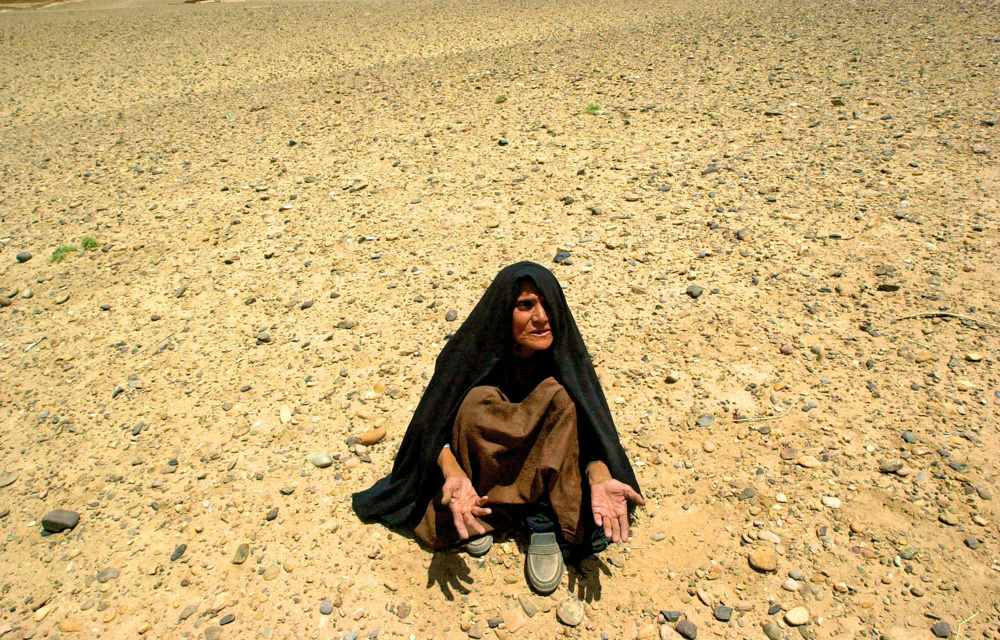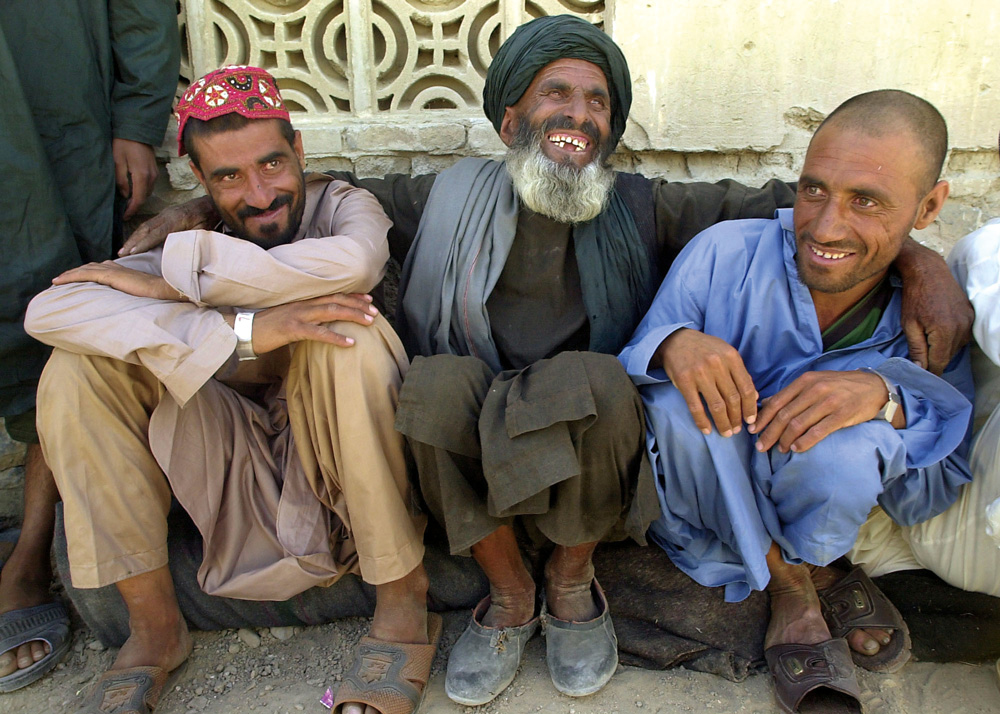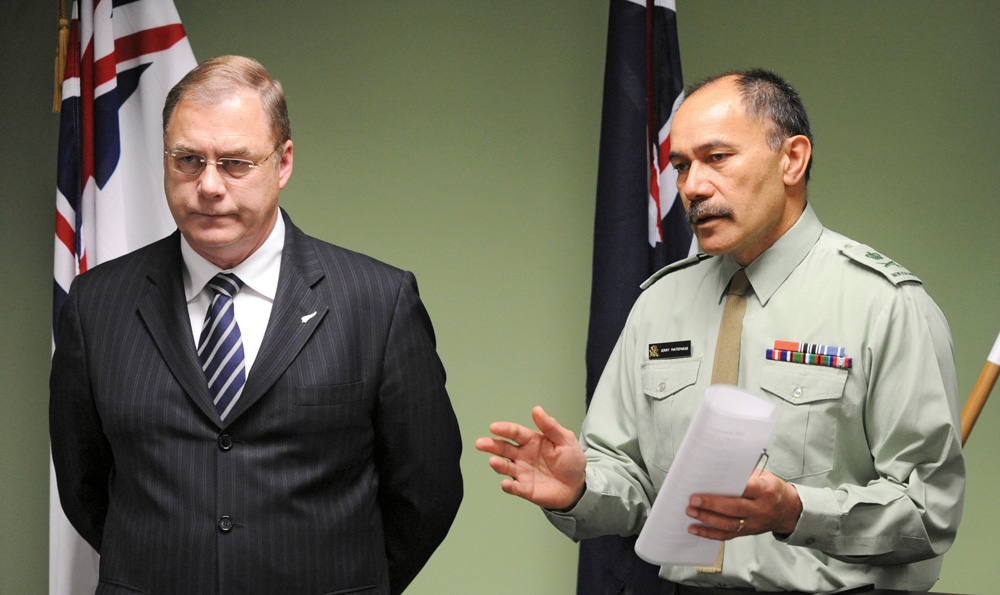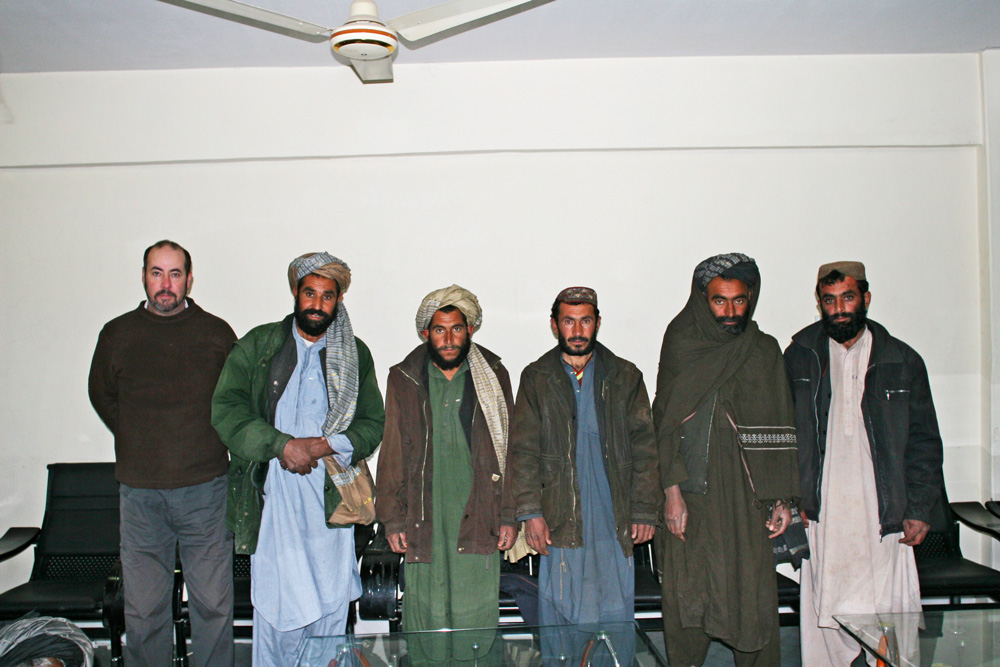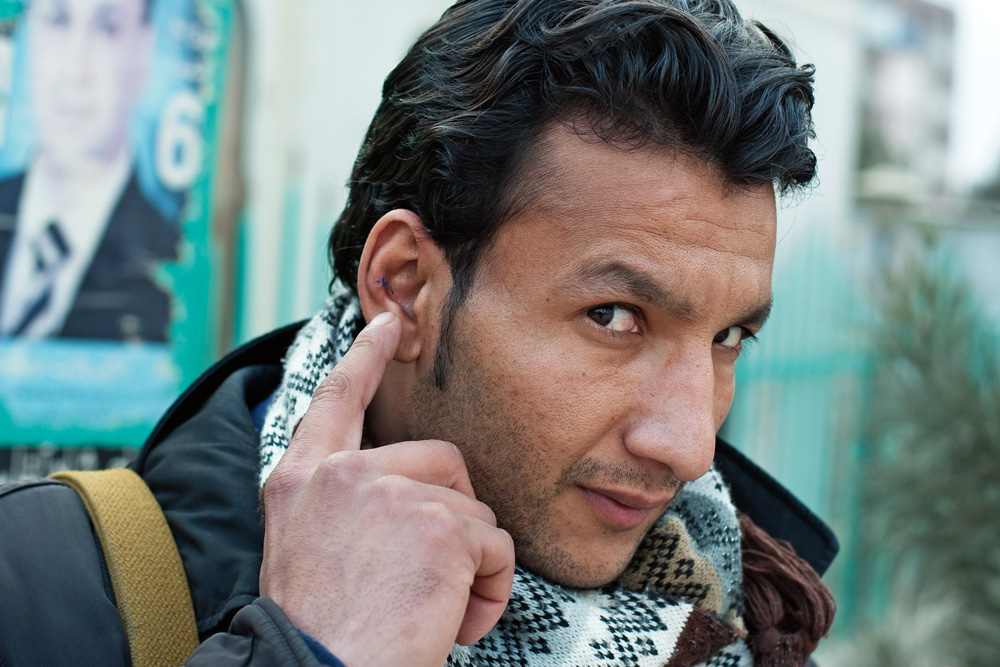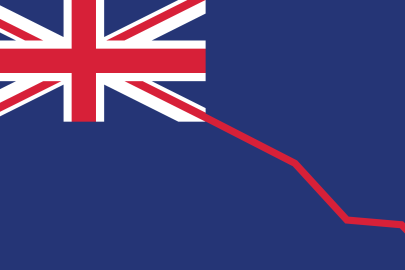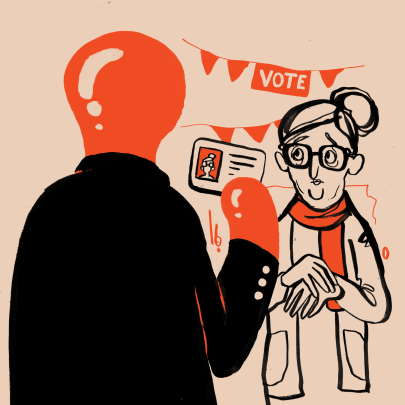Mar 22, 2017 Politics
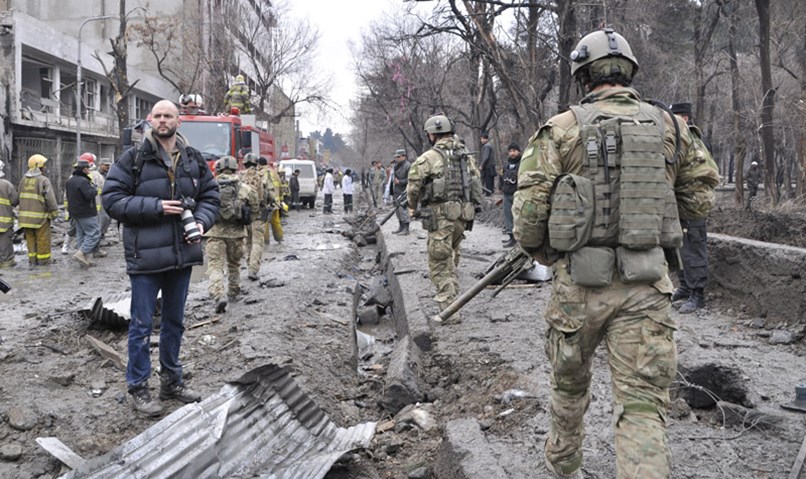
First published in Metro, May 2011.
In late 2001, when the New Zealand government decided to send troops to Afghanistan as part of the new “war on terror”, the military prepared a set of rules covering what troops could and could not do. They included a document called Rules Applicable to Any Persons Who Are Held in Any Form of Detention by the New Zealand Defence Forces. That document states:
“If NZDF personnel are required to hand prisoners of war… internees or detainees captured by them into the custody of the armed forces or authority of another state, the NZDF senior national officer is to satisfy himself/herself that the detention or internment is being conducted humanely and in accordance with the LOAC [Law of Armed Conflict].”
These rules were adopted and are still in place.
The Geneva Conventions, to which New Zealand, the United States and Afghanistan are all signatories, form part of the Law of Armed Conflict. Common Article III prohibits the torture and degrading treatment of prisoners. The conventions also say that any country transferring prisoners to the authority of another country must be “satisfied” the receiving country is “willing and able” to abide by the conventions.
Since 2001, the New Zealand Special Air Service (SAS) has been required, in effect, to ignore these rules. This has led to the torture of innocent civilians, helped build support for the Taliban in Afghanistan, and exposed New Zealand troops to the risk of criminal prosecution.
Every government we have had since that time has denied this is happening.
The Raid on Band e Timur
Eighteen-year-old Akhtar Mohammad was preparing tea for guests of Haji Bergert Khan, 70, the village head and a leader of the Ishaqzai tribe, when his younger brother ran in and shouted: “Americans are here!” As Bergert Khan’s guard, Akhtar Mohammad did not think twice: he grabbed his weapon, a Soviet-made AK-47, and ran to find his boss.
“When the Americans came, they were standing on the roofs of all of the houses,” Akhtar Mohammad told me in an interview in February. “They came over the wall of Haji Bergert’s compound and they also destroyed the gate. They blew it up.”
The American soldiers were from the US Army’s 101st Airborne Division, an infantry unit which featured in the TV series Band of Brothers and is also known as The Screaming Eagles. With them were commandos from Canada’s premier special forces unit, Joint Task Force 2 (JTF-2).
The raid took place on May 24, 2002. Although it’s been described in overseas media, no one has previously publicly identified that it was led by New Zealanders. The commandos in charge of the mission — the ones who breached the compound with explosives — were from New Zealand’s elite Special Air Service, the SAS.
The soldiers targeted three large compounds, going house to house and room to room, sometimes throwing in flash-bang grenades to stun the occupants and discourage resistance.
Fifty-five villagers were detained, all of them men. The oldest was in his 70s, the youngest was a 12-year-old boy called Baran Khan. The SAS troopers have told me they took most of them. The Canadians took just four.
They met little opposition from the men, and they followed the arrest procedures they had learned in their training. “We were firm but fair,” says one. “We’d get them on the ground so they didn’t pose a threat and do a quick search to make sure they had no weapons.” The Afghans were then flexi-cuffed with plastic cable ties and blindfolded.
Unlike the men, the women of the village were “extremely aggressive”, a trooper says. “They were screaming and shouting and carrying on. That was quite a shocking thing for the guys.” One woman picked up a gun and pointed it at the intruders before she was forced into a corner and had the weapon taken from her.
Bergert Khan, who had been at his guest house, was running back to his home with Akhtar Mohammad’s father, Haji Toor Khan, also 70. Akhtar Mohammed was close behind: “When the attack began, Haji Bergert said: ‘Don’t shoot unless they do something.’” The soldiers fired first, he insists.
“We were concerned that they didn’t kill Haji Bergert,” he explains, so “when the Americans started shooting at Haji Bergert, I started shooting back”.
The soldiers unleashed a hail of bullets. Haji Toor Khan was hit first — in his chest, in a shoulder and in both legs. Moments later, Bergert Khan was hit in the head. Out of ammunition and with a helicopter stalking him, Akhtar Mohammad threw down his weapon and was immediately tackled by two commandos, one of whom he says was a US soldier, while the other had “a different kind of uniform”. He was flexi-cuffed, blindfolded and punched repeatedly.
As Akhtar Mohammad was led away his father, Haji Toor Khan, lay dying. His family retrieved him when the soldiers had gone, but were too scared to leave their village and seek medical treatment. He lay at his home bleeding and in agony for more than 24 hours before being driven the next morning to Kandahar’s Mirwais hospital. “My father died at midday,” says Akhtar Mohammad, in a voice without grief or self-pity.
Canadian commandos on the raid say Bergert Khan, the village leader, died in US custody. They told their superiors later that he was alive when they left the compound, and Canadian military documents indicate he died after a US soldier struck him in the head with a rifle butt.
The youngest victim of the raid was a girl named Zharghunah, who reportedly fled in terror. A Time reporter who visited Band e Timur after the attack was told by her family that, half-asleep and in the dark, she had tumbled into a well.
“Her father found her later, nearly 12 metres down the shaft,” the reporter wrote, “her body broken, wet and lifeless.” Zharghunah’s mother told the reporter the girl was six years old.
What Happened To The Prisoners
The SAS did not take the detainees’ names. Instead, each detainee had a numbered prisoner-of-war card affixed to him, along with a bag with a corresponding number that contained documents or other items of interest, such as a mobile phone.
When the helicopters arrived, the detainees were marched to the landing zone and put on board. At Kandahar airbase the Afghans, still handcuffed and blindfolded, were handed to American soldiers for transfer to the nearby US detention centre. “And that,” said one SAS trooper, “is the last we saw of them.”
One detainee, 50-year-old Mohammad Wali, says it was terrifying not being able to see. “When they took us off the helicopter, the guard dogs were barking at us and sniffing and touching us.”
Abdul Wahid, 30, says the Americans forced him to sit with his legs bound and his hands tied very tightly to a piece of wood. It was so painful he passed out. “Later they took us to another room and they tore off all our clothes. Then they took us to an area where some Americans were sitting and they made us walk in front of them naked,” he says.
Mohammad Wali had his clothes cut off with scissors and was paraded with the others. “According to our culture and our religion,” he explains, “no private part of my body should be visible, but the Americans stripped us and forced us to be like that.”
Abdul Wahid: “When they made us walk naked in front of all those Americans, I was praying to my God to let me die. If someone could have sold me a poisoned tablet for $100,000 I would have bought it.”
Akhtar Mohammad: “They beat us very badly in the prison. They cut off our hair, and they shaved our beards and moustaches.”
Mohammed Wali says they even shaved his eyebrows.
There were 17 men in Abdul Wahid’s cell, and they were taken one by one for interrogation. “Whoever they selected for interrogation they would seize by the neck and make them run on their knees,” he says. The guards forced the other detainees into stress positions while they waited their turn.
“They didn’t let us sleep and didn’t give us lunch or dinner — just a little piece of bread and an egg,” says Akhtar Mohammad.
One of Bergert Khan’s sons, Haji Mohammad Sadiq, was “beaten until he was disabled”, according to Malalai Ishaqzai, a former Kandahar MP I spoke to last May.
“He was tortured a lot, and he couldn’t move his hands or legs.”
Ishaqzai told me that after Mohammad Sadiq was released, he was taken to Pakistan for medical treatment and is now in a wheelchair.
Abdul Wahid says he, too, was beaten, but he found the psychological trauma worse. “We didn’t know what was going on,” he says. “We didn’t know where we were. We didn’t know when the sun was rising and when it was setting. For seven days we didn’t know what was happening in our village.”
What was happening was an uproar. “All the women were going crazy,” says Izzatullah, a security official posted to the village after the raid. “Everybody was crying, day and night.”
Noorallah, a policeman in Kandahar, says a delegation of enraged villagers showed up in the city the next day. “They began to curse everyone. They asked the governor and the police chief: ‘What are you guys doing? Why are you not helping us? The Americans have come to our village and hit women, children and men. They killed our leader and shot everything.’”
Khal Mohammad, the Kandahar police chief, says a lot of people wanted to attack the Americans. “We said, ‘Don’t do that.’ I told them to sit down and said, ‘I will ask the Americans why they did this, and after that I will report back to you.’”
Some of the crowd moved to the US military base at Kandahar airport, 16km southeast of the city, where the detainees were being held. “Everyone was in front of the airport,” says Noorallah. “All the people from the Ishaqzai tribe and people from Kandahar City. Everybody was shouting. Everybody was angry.”
The governor, Gul Agha Sherzai, and Khal Mohammad were meanwhile meeting with the US military, who told them some of the men might be Taliban.
Afghan politics are notoriously complex: tribes and their leaders often change sides — often from expediency, sometimes out of necessity. By most accounts, Bergert Khan had supported a number of different groups throughout the years — including the Taliban.
Khal Mohammad, the police chief, did not believe Bergert Khan was still involved with the Taliban. “He was sitting at his home in peace,” he says.
Izzatullah, the security official, agrees. “There were no Taliban at that time,” he says.
The young bodyguard Akhtar Mohammad repeated this to Gul Agha Sherzai when the governor came to see the men at the detention centre. “He said, ‘I am going to release you now. Don’t join the Taliban.’ We told him: ‘We are not Taliban.’”
In fact, according to every person from the village I spoke to, at the time they supported the US-backed administration of President Hamid Karzai. “We were standing by the side of the government,” says Mohammad Wali. “They arrested us for nothing. People were killed. People’s houses were wrecked. We were taken for no reason and without any evidence.”
Not that evidence was of much interest to the Americans. No one had taken the detainees’ names, and once they were shaved it was not easy to make visual identification. As for all the personal items the SAS had scrupulously bagged and tagged, the US troops just dumped them into a single pile.
On Thursday, May 30, seven days after their arrest, 50 of the 55 men were released from the US detention centre and bundled on board two Chinook helicopters for the short flight to Kandahar. The Associated Press reported next day that thousands of people greeted them.
“If we did any crime they must punish us,” yelled one freed detainee, as he headed in a convoy to his village. “If we are innocent, we will take our revenge for this insult.”
Band e Timur (the name is sometimes spelled Band Taimore) lies in southern Helmand Province, about 80km west of Kandahar. Word of the death of Bergert Khan, the torture of his son Haji Mohammad Sadiq and the abuse of the other detained men spread quickly among the Pashtun tribes of the area, on both sides of the border with Pakistan. “Of course, if you kill a tribal leader, you injure his son and you shave all the heads and the beards of the people, it’s very bad,” says Izzatullah, the security official, with understatement.
Muslim clerics in the nearby Pakistani city of Quetta issued calls for retribution. Other recent missions by the US-led “coalition” had resulted in deaths and allegations of severe abuse, and the raid on Band e Timur added fuel to a growing fire. An AP reporter wrote that in the area, “resentment is palpable”.
There are two kinds of Taliban, says Malalai Ishaqzai, the former MP: “One kind are ‘Taliban’ who, because they have been mistreated, pick up the gun and fight. I can tell you that most of the Ishaqzai tribe are now in Gerand Jangel [a town in Pakistan] and have picked up the gun.”
None of them was Taliban before the raid, reiterates Izzatullah. After the raid, they were radicalised. “They were saying, ‘What those troops did to us was not acceptable.’ Now they have made a new way of life, a way full of hate, because they were hurt.”
Today, Band e Timur is largely abandoned and the site of frequent fighting between locals and US forces.
Why did the raid even happen? An SAS officer told me they were looking for a “high-value target”: Mullah Akhtar Osmani, the Taliban treasurer and probable heir to Taliban leader Mullah Omar. US intelligence suggested he would be there. He wasn’t. The intelligence was wrong.
What The SAS Thought About That
He said the SAS troopers had been focused on locating, securing and transferring the suspects. They believed that names and any other information required from prisoners under the Geneva Conventions would be taken by the Americans back at Kandahar — and, more importantly, that the Americans would not mistreat the prisoners.
“There was a bit of an uproar about that operation,” says one SAS man. He believes stripping and shaving the prisoners was “unnecessary” and “degrading”.
It also made it harder to confirm people’s identities and to establish if they were genuine suspects, which meant the men were held much longer than necessary. Many people had been swept up in the
operation, and “a lot of these people should never have been processed as prisoners”.
An SAS commander says an initial screening would have shown this. “We knew damn well that there were young boys, old men, who should never have been detained.” Instead, they were held for a week, and “by that stage, those people were highly pissed off”.
As one trooper put it, this undermined the whole hearts-and-minds approach of the SAS — and it created a threat to their safety as well as an obstacle to their work. The SAS philosophy is to win the locals over, not alienate and drive them to resist you through your heavy-handed behaviour.
“It’s just the opposite of what you’re trying to achieve,” he says. “You’re trying to gain the confidence of the population.”
He says there had been concerns before the raid that some US soldiers were “loose cannons”, and the squadron commander, Major Steve, “went to a lot of trouble to ensure the Americans didn’t overstep their operational orders”.
“The boys sat down with Steve and said, ‘We’re not happy with the way the prisoners were treated. We don’t particularly want to work with the Americans.’”
The SAS commander in Afghanistan at the time of the raid was Lieutenant-Colonel (now Colonel) Jim Blackwell. Despite their concerns, some of the troopers felt Blackwell was trying to keep onside with the US. “Jim was coming down and saying, ‘Oh, no, we got a lot of kudos for that operation.’ I think people realised that Jim was going to try to curry the boys along,” says one SAS member.
“A lot of the guys lost respect for him after those meetings.”
Blackwell was trying to deal with the situation. He spoke to a US military police commander outside the detention centre, “raising concerns about the way a few prisoners were handled”, as he described the conversation. But he did not insist on visiting the prisoners and he told me the Americans had refused to let him enter.
Blackwell has categorically denied any knowledge at that time of detainee mistreatment. “If any of our guys had seen any prisoner being mistreated,” he told me, “it would have been brought to my attention. I’d have been notified immediately.”
And, he added, “I would have reported it up the chain of command.”
However, he was concerned enough about US treatment of prisoners to raise it at a meeting at the SAS quarters in Kandahar with officers from the Canadian, Danish, German and Norwegian special forces.
According to a Danish officer who was there, Blackwell reported that the SAS was not happy about the way the Americans guarding detainees were operating. “They [the guards] just did things their way… They [the SAS] were following procedure with the prisoners they brought back, but felt the Americans weren’t.”
The Danish commando says Blackwell was also annoyed by the mishandling of evidence. He knew there were innocent people being caught in raids, but they could be cleared and released if they were correctly identified and evidence was kept intact.
“There was also concern about the interrogation part because there were rumours about rough treatment,” he says. Indeed, from the beginning of 2002, the US had been holding internal hearings into allegations of brutality inside the prison — some American troops were as upset as their allies about beatings and other abuse they had witnessed.
SAS troopers I have spoken to stress they treated their detainees well, and trusted the Americans to do likewise. “I know we looked after them,” one trooper says. However, he says, “we sort of knew what would happen to the prisoners, Americans being Americans”. He climbed on a roof to get a look, and told me he saw head-shaven prisoners in jumpsuits: “It looked like Guantanamo Bay.”
“Everything that came out of Abu Ghraib [the notorious US-run prison in Iraq], I could see how that would happen,” says one of the troopers. “I lost a lot of respect for Americans during my time in Afghanistan. They’re just so brainwashed.”
What The Government Did About It
Clark has long been known for her commitment to human rights. She even helped launch a Campaign to Stamp out Torture. On October 18, 2000, she stood on the steps of Parliament and pledged: “I, Helen Clark, Prime Minister, hereby affirm that the New Zealand Government does not tolerate torture within New Zealand and is committed to working for the eradication of torture everywhere.”
That pledge was put to the test just over a year later, when New Zealand committed the SAS to joining the US-led “war on terrorism” in Afghanistan.
Guantanamo Bay, the US detention centre on the island of Cuba, was quickly in the news. Afghan prisoners there were treated extremely harshly and faced indefinite detention and possible execution, without being tried by a legally recognised tribunal. George Bush, the American president, declared the Geneva Conventions need not apply to Taliban or Al Qaeda suspects because they were “unlawful combatants”, not prisoners of war.
The NZDF legal services director, Kevin Riordan, responded to that by advising the NZDF that it was not for the president of the United States to decide who was a prisoner of war — such decisions had to be made by a competent tribunal.
Riordan proposed that New Zealand should see how other coalition countries handled detainee issues before deciding how to meet its Geneva Convention obligations.
I have also seen documents that show NZDF knew SAS troopers would have to detain people who might be handed to US forces, and therefore sent to Guantanamo Bay.
This was discussed at length internally, even after the SAS had begun its first tour of duty in Afghanistan.
On January 23, 2002, Clark said she had “accepted assurances” from the British government that Taliban and Al Qaeda prisoners were being treated humanely.
But she did acknowledge there were different views on whether the detainees were prisoners of war or unlawful combatants. “Just what the law is in this case is not entirely clear,” she said.
Clark, who had personally signed off the SAS rules of engagement and was famous for her micro-management style, told the New Zealand Herald she “did not want to rush into making judgments about issues” she had “not been following closely”.
On February 26, Lieutenant-Colonel Larry Maybee, one of Riordan’s staff, prepared a lengthy document on the matter, and he was blunt. Every detained person, he stated, had the right to “fundamental minimum guarantees”, whether they were prisoners of war, unlawful combatants, members of a resistance, spies or saboteurs. They were entitled “to be treated with humanity and shall not be deprived of a fair and regular trial”.
After Band e Timur, the warning signs were clear. The prisoners detained by the SAS were abused by US guards in Kandahar detention centre, and five were not released with the others. I have been told by senior people in the SAS that they believe at least three of them were sent to Guantanamo Bay.
Human Rights Watch investigator John Sifton told me in 2008 he found it “difficult to believe” anyone stationed at Kandahar in 2002 — as SAS troopers were — would “not know what was going on”.
The NZDF, however, has always claimed exactly that, at least in public. It says it didn’t know about US mistreatment of Afghan prisoners prior to April 2004, when the terrible abuses in Abu Ghraib prison in Iraq were exposed.
Jerry Mateparae, by now NZDF chief, in 2009: “Our understandings [in 2002] of how others would operate were quite different, and subsequently we’ve seen some untoward things in terms of Abu Ghraib. That wasn’t on the landscape.”
Kevin Riordan in 2009: “We weren’t getting any of that [information about prisoner mistreatment] in 2002. We knew at Abu Ghraib.”
Phil Goff, foreign affairs minister in 2002, has also claimed the truth became clear only after Abu Ghraib. In a 2009 interview, he told me he was getting much of his news on Afghanistan from international media like the New York Times. He may not have remembered that in 2002, the Times and other media ran stories about mistreatment of prisoners at Kandahar detention centre. Although New Zealand wasn’t mentioned in those stories, they did include accounts of the raid on Band e Timur — and the effect it had on the local population.
The first SAS deployment ended in December 2002 and the second did not begin until February 2004, shortly before news broke about Abu Ghraib. Stories were already circulating: on January 16, US Central Command announced that an official investigation had begun into allegations of abuse of Iraqi detainees by US soldiers.
Helen Clark was clearly in the loop. Her departments, the Department of the Prime Minister and Cabinet and the External Assessments Bureau, received information on detainee issues along with the Ministry of Foreign Affairs and Trade (MFAT), the Ministry of Defence and the NZDF. On March 31, 2004, MFAT officials wrote a detailed seven-page memorandum on the matter for Goff and the defence minister, Mark Burton, with a specific recommendation that it be given to the PM.
A diplomatic cable on April 21 from Wellington to the New Zealand embassy in Washington, and copied to more than a dozen government departments and embassies, stated that “New Zealand has carefully considered the policy and procedures in the event that it is necessary to detain individuals in the course of the NZ SAS deployment in Afghanistan”.
It noted the importance of “international humanitarian law and human rights law” and noted “the considerable public interest [in New Zealand] in the US treatment of detainees, particularly following the release of the Human Rights Watch report”.
That report, entitled Enduring Freedom: Abuses by US Forces in Afghanistan, is dated March 8, 2004, and runs to 59 pages. It catalogues a wide range of abuses and says the US was “endangering the lives of Afgan civilians, undermining efforts to restore the rule of law in Afghanistan, and calling into question its commitment to upholding human rights”.
“Simply put,” the report states, “the United States operates its detention facilities in Afghanistan in a climate of almost total impunity.”
Among the many incidents it cites there is a raid by “US Army and special forces troops” that took place on May 24, 2002, in the village of “Band Taimore”, killing a tribal leader and causing the death of a young girl.
That must have made the NZDF very nervous.
The second SAS deployment finished in September 2004, and despite everything, the government committed the SAS to Afghanistan for a third time in June 2005. They still did not know what had happened to all the Band e Timur prisoners, and there was still no procedure in place to ensure the SAS could honour the Geneva Conventions and its own rules regarding the treatment of prisoners.
Worse, the government had now agreed to transfer any detainees captured by the Bamiyan Provincial Reconstruction Team to Afghan authorities.
The Americans might be bad, but as Kevin Riordan, the NZDF legal chief, knew only too well, detention by Afghan authorities had every chance of being worse. Back in 2002, Riordan had been sent, at the request of Helen Clark, to join an international investigation force that visited the notorious Pul e Charkhi prison, run by Afghan authorities on the eastern outskirts of Kabul. He later told me it was “a terrible place”.
He added: “When I meet my maker and I’m asked, ‘Kevin, did you do anything good in your life?’ I’ll be able to say, ‘I got those people out of Pul e Charkhi.’”
In February 2007, Phil Goff, as defence minister, revealed that New Zealand’s concerns about prisoner treatment in 2002 were such that Bruce Ferguson, when he was Defence Force chief, had negotiated a deal with the International Committee of the Red Cross. The ICRC, he said, had agreed to follow up on any prisoners New Zealand forces helped to capture.
The problem, as journalist David Beatson was eventually to discover, was that the Red Cross had no record of such a deal.
Goff also claimed that New Zealand had “followed up” on the prisoners who were transferred in 2002, and “to the best of our knowledge” none of them was still in US custody.
That was misleading. Goff either knew or should have known that when the Band e Timur prisoners were finally “followed up”, in August 2006, the US authorities told our officials that “the level of information you provided was not really sufficient to check whether any of the persons captured and detained remained in US custody”.
What other information did they want? “Ideally their names.”
There is a simple logic to it. If you don’t identify your prisoners when you capture them, it’s very difficult to find out what happens to them later.
It is possible to argue the New Zealand government has tried for almost 10 years to minimise its involvement in illegal activity in Afghanistan, and that it has worked behind the scenes to persuade the US to follow the Law of Armed Conflict.
But a government committed to its legal obligations could have required the NZDF to find the survivors of the Band e Timur raid and compensate them. Riordan, for one, has not denied this should be done, but says it has been too hard to find the people concerned. This is unconvincing. I found them last year, and I did not have the resources of the NZDF.
One former senior officer in the NZDF says the Band e Timur raid is the issue that has troubled him most during his career. “It’s the one thing that’s kept me awake at night,” he told me. “I truly hope, if we have done the wrong thing, that we own it, fix it, and learn the lessons.”
A government genuinely committed to doing that would have insisted on the rules being observed: on prisoner names being taken and on prisoners not being handed over to other forces where there was an obvious risk of abuse.
In fact, following Band e Timur, something completely different happened. According to the official line, the SAS simply stopped taking prisoners. Phil Goff stated in 2007 there were only two occasions on which anyone had been detained by the SAS in Afghanistan (one was Band e Timur; the other happened even earlier).
It’s not likely the SAS went on missions without ever getting into a situation where they had to take prisoners. It’s not credible that they simply let insurgents go, or shot them. The only viable explanation is that someone else went along on SAS raids and took prisoners on their behalf. American forces, for example, or Afghan forces.
In other words, it seems the NZDF put in place a process it hoped would allow it to cover its legal obligations in Afghanistan — not by ensuring the humane treatment of prisoners, but by avoiding responsibility for any who might be treated inhumanely.
It’s clear not everyone thought this would work. Larry Maybee, the NZDF legal adviser, wrote in 2002 that an “obligation exists on all states that are involved in the capture and continued detention of detainees. To suggest otherwise would enable some states to abrogate their responsibility in the treatment of POWs at certain stages in their detention.” Indeed.
Return To Afghanistan
“I know some of you have raised questions of how the SAS will deal with detainees, so let me address that,” he told a Beehive media conference. “If the SAS were required to detain people, it is most likely they will be handed over to Afghan authorities.
“Like New Zealand, Afghanistan is a party to the Geneva Conventions. New Zealand has already received an assurance from the Afghan government that all transferred detainees will be treated humanely according to these conventions and international law.”
In January 2010, after photos were published of a bearded Willie Apiata, VC, and an SAS comrade striding from the scene of a shootout at Kabul, Key announced there would be greater openness in reporting on the SAS deployment. “New Zealanders,” he said, “deserve to know what our forces are doing overseas.”
Jerry Mateparae told journalists he was “very comfortable” with the new policy and added that a recent operation had seen the SAS “assist” the CRU to detain insurgent suspects.
In March, however, he declined my Official Information Act request for details of how many detainees had been arrested on joint SAS-CRU operations. He refused to say whether those detainees were still in custody, which branch of Afghan security forces had them and where they were held. To provide any of this information could, he claimed, prejudice New Zealand’s security, defence or international relations, or endanger someone’s safety.
He also contradicted his earlier statement that the SAS had “assisted” in the capture of suspects. His new position was: “NZSAS personnel have been in the vicinity when members of the Afghan National Security Forces have arrested or detained Afghans… [but] NZSAS members have not assisted in detaining persons or making those arrests.”
I had asked him what action the NZDF had taken to check that suspects the SAS had assisted in detaining were being well treated after their transfer. He replied: “No action has been taken, as the NZDF is not the detaining authority.”
I visited the CRU base in Kabul in April last year. The CRU commander, “Colonel M”, told me the SAS was “very, very involved” in detaining suspected insurgents. Speaking about a recent SAS-CRU mission that had led to the capture of five suicide bombers, he said: “I wouldn’t say we did this by ourselves. It was a collaborative effort.”
Defence Minister Wayne Mapp appeared before Parliament’s foreign affairs, defence and trade select committee in June last year, with Jerry Mateparae at his side.
By that time, the SAS had, according to the NZDF itself, been “in the vicinity” on 22 occasions when suspect insurgents had been detained. Mapp told the committee the Afghan CRU was the detaining authority on every one of those occasions. He cited a “non-torture” agreement New Zealand had with Afghanistan and assured the committee the NZDF took its international law responsibilities very seriously.
He also introduced the “Red Cross defence” floated in 2007 by Phil Goff. Mapp told the committee that even though the SAS was not the detaining authority, its members had taken the names of all detainees captured on joint SAS-CRU operations and passed them to the International Security Assistance Force (ISAF). This is the name for the US-led military coalition in Afghanistan. In turn, Mapp said, the ISAF made the names available to the Red Cross.
Green MP Keith Locke asked him if the government had followed this up, and Mapp replied: “We’ve not heard any complaints from the Red Cross.” Locke asked how they could be confident about prisoner treatment if they hadn’t followed up. “Because,” said Mapp, “the Red Cross would tell us.”
In fact, the Red Cross is prohibited by its own rules from giving any information of this kind to the New Zealand government. Mapp, who told the committee he was an expert on international law, either knew or should have known that the only authority to which the Red Cross will pass information about the treatment of detainees is the state that detained them.
The Red Cross has also made clear, in a written response to questions from me, that: “Where a risk has been identified prior to the transfer of a detainee, the transfer must not take place. This is true irrespective of whether the ICRC [International Committee of the Red Cross] subsequently visits the detainees held in the place of detention.”
Besides, what was true for Phil Goff in 2007 was also true for Wayne Mapp in 2010. As a Red Cross official told me: “The ICRC does not have an agreement with the Government of New Zealand or NZDF with regards to detention-related matters in Afghanistan.”
Red Cross officials in Afghanistan have made all this explicitly clear to Wayne Mapp.
War is Hell, they say, and it’s obviously true. But the government has never argued that legalities are too hard to observe in a theatre of war. On the contrary, National ministers have made the same kinds of public statements that Labour ministers made before them.
Wayne Mapp told the select committee last June: “New Zealanders want to be able to see [and] the Defence Force wants to see that we observe all principles of international law and all our legal responsibilities.”
The Prime Minister told a media conference on August 16 last year: “New Zealand, when it acts in a capacity where it detains an insurgent or someone in Afghanistan, then we abide by the recognised international obligations and the likes of the Geneva Convention. As it turns out, up to this point — this most recent time that we’ve certainly been in government — we haven’t actually detained anyone. But if we did, then we’d honour those agreements.”
I had earlier asked Jerry Mateparae in an OIA request for details of any assessment the NZDF had made of the willingness and ability of Afghan authorities to treat detainees well. After a six-month delay, he replied that the NZDF had collected publicly available information, received information from the ISAF and was monitoring the situation. He gave no specifics.
Asked if the NZDF was checking on people the SAS had detained or helped to detain, he produced the now-standard line: although SAS troopers had been in the vicinity when Afghan security forces had detained suspects, “no member of the NZSAS has detained or arrested any person in Afghanistan”.
John Key repeated this assurance publicly at that media conference on August 16: “If Jerry Mateparae’s advice is they [the SAS] are not involved in the arrests, they’re not involved in the arrests.”
He was then asked specifically about the CRU commander’s claim that SAS troopers were “very, very involved”.
“Well,” said Key, “I believe Jerry Mateparae.”
Just weeks earlier, the SAS had been on a mission in Wardak Province with the CRU and the Afghan National Army (ANA) when they became engaged in a gun battle with Taliban insurgents. Three ANA soldiers were killed and the ANA commander was wounded before the SAS called in an air strike. One Taliban fighter fled on foot, but was caught by members of the SAS.
The SAS handed their prisoner to the CRU, who passed him to the ANA, who mistreated him so badly his hand was broken. The ANA commander then ordered him to be tied behind one of the vehicles so they could drag him back to their base — over gravel roads for a distance of more than 100km.
When the SAS realised this, they intervened and, at their insistence, the CRU took charge of the prisoner. He was transported back to Kabul inside the truck, alive.
Then, however, the CRU handed him over to the Afghan National Directorate of Security (NDS).
The NDS has a fearsome reputation. The High Court in London has heard evidence that hundreds of detainees transferred by the British military to the NDS between 2006 and 2007 were tortured. Among the allegations were “66 cases of torture in Kabul including amputation of limbs, electric shocks, deprivation of sleep, water and food, beatings by rod and cable, scorching” and death. The court has banned British forces transferring prisoners to the NDS in Kabul.
It is not only insurgents who feel the heavy hand of the NDS. The organisation takes an interest in any individual or group it believes threatens the state, including women’s rights groups and the media, some of whom have been subjected to persecution, arbitrary arrest and torture.
I asked Wayne Mapp in August 2010 about SAS-CRU detainees being handed to the NDS, and initially he said he was “not specifically” aware of this. But then he called me back, after checking with the NZDF, and stated: “It’s likely some are [transferred to the NDS], yes.”
Asked the following day on Radio New Zealand’s Morning Report if this meant they could have been tortured, he said, “You can’t rule that out.”
Mapp acknowledged it was “clearly a concern” that the government had put SAS members in a situation where this could happen. He said he had ordered an inquiry and promised to make the result public.
The man tasked with carrying out the inquiry was Kevin Riordan, NZDF director of legal services. Nearly nine months later, Mapp has not released Riordan’s report.
New Zealand’s unwillingness to confront the United States and, more recently, Afghanistan about their mistreatment of prisoners may be politically understandable, but continuing to transfer detainees when we have evidence of mistreatment makes us complicit in the crime.
It is possible that SAS troopers, along with their political masters, will one day be held to account for this. The chief prosecutor of the International Criminal Court, Luis Moreno Ocampo, is currently conducting a “preliminary examination” into human rights abuses in Afghanistan. He says he will look at the actions of the US-led forces as well as those of the Taliban.
Moreno Ocampo was quoted in Canadian media in February as saying he would not hesitate to prosecute Western governments that fail to hold their officials to account. “I prosecute whoever is in my jurisdiction,” he said, adding that “we have one rule for everyone”. His team is currently investigating the Canadian military for handing prisoners to the NDS.
One defence source told me the NZDF is watching the legal situation in Canada closely. “They’re scared the same thing could happen here.”
There is also the possibility of civil action. In Denmark, a prisoner abused in 2002 after being handed by the Danish special forces to the Americans at Kandahar has sued the Danish state. Serving and former soldiers have been required to give evidence.
The Tiger Raid
The Tiger personnel say they did not shoot. Barialy, the first guard to confront the troopers, told me he yelled, “Who are you?” in his own language, before being shot at, twice, from a distance of about 10 metres. The first shot missed; the second pierced his right earlobe. A guard named Hamid was hit in his flak jacket and shoulder, and Barialy helped him to safety. Two other guards, Mubin and Sadiq, were shot dead.
The Tiger employees holed up in an upstairs office. They say three bearded men in uniforms came into the room and arrested them.
The Kabul police arrived minutes after the raid, but one police chief told me they were prevented by the SAS from entering the Tiger offices. NDS officers turned up as well and eventually they gained access. The SAS handed their prisoners to the NDS, who recognised them, vouched for them, and released them immediately. It was about 3.30am.
The NDS told Nawid Shah Sakhizada, the company owner, that the soldiers were New Zealand special forces. Mohammad Haris, Tiger’s sales manager, says the SAS apologised, saying: “We did not find anything. It was a misunderstanding. There was some suspicion so we had to come here. We didn’t want [things] to be like this and to kill people and wound people, but it has happened. We are sorry.”
In the days following, however, the ISAF suggested that terrorists had been detained and incriminating evidence found at Tiger’s office.
In a statement dated January 14 — three weeks later — NZDF chief Jerry Mateparae said the raid was conducted on the basis of “credible intelligence”, that the Afghan government had been informed and the SAS was “partnered” on the raid by the Crisis Response Unit.
He added that “items consistent with the initial intelligence report were found in the compound, further validating the operation”. The ISAF had said it was “more than satisfied the NZSAS had acted appropriately”, and so, said Mateparae, was he.
He did not explain why, if incriminating evidence was found, the detainees were released without charge and had their weapons returned to them, without even being questioned. Nor did he address the question of why the CRU, the SAS’ supposed partner on the raid, had not detained the suspects. That’s how the “in the vicinity” policy of the SAS is supposed to work.
The Tiger employees say that, until the police and the NDS entered the building more than an hour after the raid began, they saw no Afghans with the SAS, neither soldiers nor interpreters. I have questioned several of them repeatedly on this point.
Haris says there was one Afghan there. He was a colonel in the CRU and he sat out of the way in a vehicle for the whole time.
It is difficult to escape the conclusion that the attack on Tiger International was an SAS raid, not a joint operation, that the SAS took prisoners and that it handed them to the NDS.
It is also difficult to escape the view that if those prisoners had not been recognised by the NDS and released, there was a real chance they would be taken away and tortured.
If that is so, it reveals the SAS in Afghanistan is still operating, as it was way back in May 2002, in defiance of its own rules. And it contradicts repeated assurances that this is not so, given by Defence Minister Wayne Mapp, Prime Minister John Key and the man who is going to be our new Governor-General: Jerry Mateparae.
The consequences are severe. Innocent people are being harmed. The mission to prevent the growth of terrorism in Afghanistan is helping, at least in part, to make enemies among the Afghan people. Our troops are being required to act illegally and that places them at risk of criminal prosecution.
The question is: at what level has the deception set in? Is the SAS mission in Afghanistan misleading the NZDF at home? Is the NZDF misleading the government?
Or do they all have their eyes wide shut — aware of what is happening, doing nothing to stop it, staring straight ahead while they deny they can see anything wrong?


